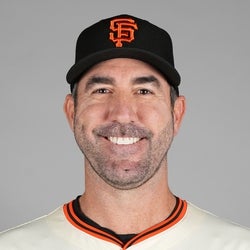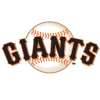
Justin Verlander
42-Year-Old
Free Agent

2025 Stats
W-L
4-11
ERA
3.85
WHIP
1.36
K
137
SV
0
2026 Projections
2026 Fantasy Outlook
Verlander's second-half surge was somewhat misleading. He posted a 4.70 ERA in 76.2 innings before the break compared to a 2.99 mark over 75.1 innings afterward, though the corresponding xFIPs were nearly identical. To his credit, the veteran increased his strikeout rate and allowed fewer home runs down the stretch, but the primary driver of the improved ERA was a substantial jump in his left-on-base rate. Verlander intends to continue pitching, and while his Hall of Fame résumé and sub-4.00 ERA in two of the past three seasons are appealing, caution is warranted. His best xFIP since 2023 is 4.56, and it has reached as high as 5.13. Read Past Outlooks

Ends 2025 season strong
Verlander (4-11) earned the win against the Rockies on Saturday, allowing two runs on five hits and one walk while striking out seven across six innings.
Analysis
Verlander got off to a shaky start by yielding solo home runs to Hunter Goodman and Brenton Doyle in the first and second innings, respectively. The veteran right-hander managed to settle in to keep the Rockies off the board for the rest of his outing, and he finished his quality start with 17 whiffs on 92 pitches. Verlander struggled in the first half of the season, failing to log a win while posting a 4.70 ERA and 1.42 WHIP across 76.2 innings prior to the All-Star break. However, the three-time Cy Young winner came alive after the break, going 4-4 across 14 starts with an impressive 2.99 ERA, 1.30 WHIP and 70:26 K:BB over 75.1 frames. Verlander will turn 43 in February but intends to continue his storied major-league career in 2026, per Bob Nightengale of USA Today.
Verlander got off to a shaky start by yielding solo home runs to Hunter Goodman and Brenton Doyle in the first and second innings, respectively. The veteran right-hander managed to settle in to keep the Rockies off the board for the rest of his outing, and he finished his quality start with 17 whiffs on 92 pitches. Verlander struggled in the first half of the season, failing to log a win while posting a 4.70 ERA and 1.42 WHIP across 76.2 innings prior to the All-Star break. However, the three-time Cy Young winner came alive after the break, going 4-4 across 14 starts with an impressive 2.99 ERA, 1.30 WHIP and 70:26 K:BB over 75.1 frames. Verlander will turn 43 in February but intends to continue his storied major-league career in 2026, per Bob Nightengale of USA Today.
Pitching Stats
Loading Pitching Stats...
2025 MLB Game Log
2025
2024
2023
2022
2021
2020
2019
2018
2017
Minor League Game Log
Calculate Stats Over Time
Just click on any two dates.
Loading Minor League Pitching Game Log...
Pitching Appearances Breakdown
Average Pitch Count
90
Last 10 Games
98
Last 5 Games
95
How many pitches does Justin Verlander generally throw?
1-10
11-20
21-30
31-40
41-50
51-60
61-70
71-80
81-90
91-100
101-110
111-120
121+
What part of the game does Justin Verlander generally pitch?
1st
2nd
3rd
4th
5th
6th
7th
8th
9th
Extra
% Games Reaching Innings Threshold
% Games By Number of Innings Pitched
Left/Right Pitching Splits
Since 2023
-7%
BAA vs LHP
2025
-1%
BAA vs RHP
| BAA | K | BB | H | HR | |
|---|---|---|---|---|---|
| Since 2023vs Left | .240 | 178 | 64 | 178 | 22 |
| Since 2023vs Right | .259 | 177 | 60 | 214 | 27 |
| 2025vs Left | .262 | 68 | 31 | 74 | 7 |
| 2025vs Right | .259 | 69 | 21 | 81 | 9 |
| 2024vs Left | .244 | 42 | 15 | 44 | 10 |
| 2024vs Right | .303 | 32 | 12 | 54 | 5 |
| 2023vs Left | .214 | 68 | 18 | 60 | 5 |
| 2023vs Right | .237 | 76 | 27 | 79 | 13 |
Home/Away Pitching Splits
Since 2023
-8%
ERA on Road
2025
-7%
ERA at Home
| ERA | WHIP | IP | K/9 | BB/9 | |
|---|---|---|---|---|---|
| Since 2023Home | 4.13 | 1.29 | 207.0 | 8.5 | 2.6 |
| Since 2023Away | 3.78 | 1.26 | 197.2 | 7.3 | 3.0 |
| 2025Home | 3.74 | 1.39 | 91.1 | 9.3 | 3.0 |
| 2025Away | 4.01 | 1.32 | 60.2 | 6.4 | 3.3 |
| 2024Home | 7.98 | 1.60 | 29.1 | 5.8 | 3.1 |
| 2024Away | 4.28 | 1.28 | 61.0 | 8.1 | 2.5 |
| 2023Home | 3.23 | 1.08 | 86.1 | 8.5 | 2.0 |
| 2023Away | 3.20 | 1.20 | 76.0 | 7.3 | 3.1 |
Stat Review
How does Justin Verlander compare to other starting pitchers?
This section compares his stats with all starting pitcher seasons from the previous three seasons (minimum 120 innings)*. The bar represents the player's percentile rank. For example, if the bar is halfway across, then the player falls into the 50th percentile for that stat and it would be considered average.
* Exit Velocity, Barrels/BBE %, Balls Hit 95+ MPH %, and Spin Rate are benchmarked against 2019 data (min 120 IP). See here for more exit velocity/barrels stats plus an explanation of current limitations with that data set.
* Exit Velocity, Barrels/BBE %, Balls Hit 95+ MPH %, and Spin Rate are benchmarked against 2019 data (min 120 IP). See here for more exit velocity/barrels stats plus an explanation of current limitations with that data set.
K/BB
2.63K/9
8.1BB/9
3.1HR/9
0.9Fastball
94.0 mphERA
3.85WHIP
1.36BABIP
.323GB/FB
0.90Left On Base
72.0%Exit Velocity
81.7 mphBarrels/BBE
4.8%Spin Rate
2451 rpmBalls Hit 95+ MPH
22.5%Swinging Strike
11.3%Advanced Pitching Stats
Loading Advanced Pitching Stats...
Defensive Stats
Loading MLB Defensive Stats...
Stats Vs Today's Lineup
Want more matchup stats?
Loading Matchup Stats...
Past Fantasy Outlooks
2025
2024
2023
2022
2021
2020
2019
2018
2017
2016
2015
2014
2013
2012
2011
2010
2009
2008
2007
2006
2005
2004
Verlander began the 2024 season on the IL with a shoulder issue. He debuted in mid-April and made 10 starts, before experiencing a neck issue. At the time, he posted a 3.95 ERA and 1.21 WHIP. However, a 4.98 xFIP, .263 BABIP and 81.6 percent left on base rate indicates he was fortunate. After spending almost 11 weeks on the IL, Verlander returned to make seven more starts with a bloated 8.10 ERA and 1.68 WHIP. Over this stretch, his xFIP was 5.42 with a .356 BABIP and 53.4 percent left on base level, demonstrating misfortune along with subpar pitching. Verlander's strikeout rate is in free-fall, and while his walk rate is still below average, it's creeping up. It's tempting to expect another rebound from a guy who defied the odds after returning from Tommy John surgery when he was 39 years old. It's best to resist temptation.
More Fantasy News

Roughed up in 11th loss
Verlander (3-11) took the loss Monday, allowing six runs (four earned) on nine hits and two walks over 4.1 innings against the Cardinals. He struck out three.
Analysis
Subscribe now to instantly reveal our take on this news.
Subscribe now to instantly reveal our take on this news.

Blanks D-backs in no-decision
Verlander came away with a no-decision in Wednesday's 5-1 extra-innings win over Arizona, allowing three hits and two walks over seven scoreless innings. He struck out three.
Analysis
Subscribe now to instantly reveal our take on this news.
Subscribe now to instantly reveal our take on this news.

Goes seven innings in pitching duel
Verlander allowed one run on four hits and four walks while striking out four over seven innings in a no-decision versus the Dodgers on Friday.
Analysis
Subscribe now to instantly reveal our take on this news.
Subscribe now to instantly reveal our take on this news.

Blanks Cardinals in no-decision
Verlander didn't factor into the decision against the Cardinals on Saturday, tossing six scoreless innings while allowing three hits and striking out six.
Analysis
Subscribe now to instantly reveal our take on this news.
Subscribe now to instantly reveal our take on this news.

Strikes out 10 in win
Verlander (3-10) allowed three hits and four walks while striking out 10 over five scoreless innings to earn the win Sunday over the Orioles.
Analysis
Subscribe now to instantly reveal our take on this news.
Subscribe now to instantly reveal our take on this news.
Latest Fantasy Rumors

Could return to San Francisco
The Giants could be open to bringing Verlander back to San Francisco this offseason, according to Alex Pavlovic and Laura Britt of NBC Sports.
Analysis
Verlander still has something left in the tank, and since the Giants have a clear need for pitching, they might consider a move for the 43-year-old hurler. Verlander posted a 3.85 ERA and 137:52 K:BB across 29 starts and 152 innings in the 2025 regular season.
Verlander still has something left in the tank, and since the Giants have a clear need for pitching, they might consider a move for the 43-year-old hurler. Verlander posted a 3.85 ERA and 137:52 K:BB across 29 starts and 152 innings in the 2025 regular season.















